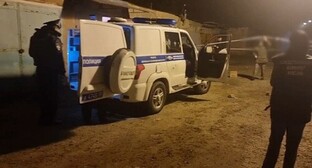21 April 2003, 03:25
Geographic position and natural resources of North Ossetia-Alania Republic
The Republic of North Ossetia-Alania occupies part of the Central Caucasus and northern slopes of the Main Caucasus. The length from the north to the south ? 125 km; from the west to the east ? 120 km; the narrowest part of the territory so-called Ossetian Corridor is only 3 km wide. Internal administrative borders: in the north ? with Stavropol Territory, in the west ? with Kabardino-Balkariya, in the northeast ? with Chechnya and Ingushetia, external state border ? in the south with Georgia. After the collapse of the USSR the republic became border region of Russia.
North Ossetia-Alania Republic occupies an important position in the transport system of North Caucasia. A very important role is played by the part of the Georgian Military Road from Vladikavkaz to the Russian-Georgian border in Daryal canyon and Trascaucasian motorway with a tunnel through the Main Caucasus Mountains range. The total length of highways with various surface is about 2000 km. North Ossetia is located on the joint of the main railway Moscow ? Baku. In the first quarter of 1998 direct communication of trains Vladikavkaz ? Mozdok was restored and the number of trains Vladikavkaz ? Beslan was increased. The international airport Vladikavkaz is located near Beslan. The territory of the republic is also crossed by gas pipeline Tikhoretsk ? Mozdok ? Makhachkala and oil pipeline Makhachkala ? Mozdok ? Tikhoretsk ? Novorossisk. Distance from Vladikavkaz to Moscow ? 1923 km.
Almost half of the territory of the republic is occupied by mountains, mostly foothills and slopes of the Large Caucasus with the height of 4600 ? 4700 m. The highest point of the republic ? Mountain Dzhimaray-khokh (4780 m above the sea level). One of highest peaks of the Caucasus ? Mount Kazbek (5046 m) is located on the border with Georgia. Northern part of the territory ? plain (Mozdok steppe plain), with the river Terek, Tersky mountain range in the south, Sunzha mountain range and, finally, North Ossetian inclined plain.
The climate generally moderately warm and humid, the temperature varies depending on the altitude of the territory. Average temperature on the plain: January -4.5?C, July +24?C. Annual precipitation 600 ? 700 mm (on plains) and up to 900 mm (in foothills). The summer is colder in Ossetian plain. In the mountains the winter is colder and longer and the summer is moderately warm with much precipitation.
The rivers fall into the basin of Terek, the main rivers are Urukh, Ardon, Fiagdon, Gizeldon. They are used for irrigation and as the source of hydraulic power. Along the river valleys the roads connecting the highland regions and the lowland part of North Ossetia are located.
The mountains of the republic are covered with broad-leaved forests including valuable species of wood ? beech, hornbeam, oak. North Ossetian plain almost completely ploughed up, its fertile chernozem and chestnut soils are used for agriculture.
North Ossetia possesses considerable recreational resources: river recreational complex in Tseysky canyon with its glaciers, pine forests and waterfalls, balneal health resorts Karmadon and Tamisk with healing mineral springs.
The main mineral resources: complex ore (zinc, lead, tin, copper, silver); building materials, facing stone (marble, limestone, dolomite): mineral and fresh glacial water; 42 healing mineral springs.
The reservoirs of complex ore developed by Sadon zinc-lead plant are a good source of raw materials for non-ferrous metallurgy. The commercial reserves of complex ore are located in 11 fields, from which only three are now exploited: Sadonskoye, Zgidskoye and Arkhonskoye. The balance reserves of zinc-lead ore are estimated as 12.4 million tons. The total production of complex ore in 1995 was 79 thousand tons.
Non-metallic mineral resources in the territory of the republic include: 9 fields of sand and gravel mixtures (7 are exploited); 6 fields of sand products for different purposes (3 are developed); 12 fields of clay for production of brick, tile and expanded clay; 3 fields of sand products for production of silicate brick; 3 fields of facing stone and 2 fields of non-metallic raw materials for general purpose (limestone, dolomite). The most widespread is the mining of sand and gravel mixtures conducted at 16 opencasts (with annual capacity of above 2.5 million cubic metres).
4 fields of oil are exploited in the territory of North Ossetia: Severo-Zamankulskoye, Kharbizhinskoye, Severo-Akhlovskoye, Krasnogorskoye with production reserves of 4358 thousand tons, including 4158 thousand tons of non-balance resources (because of high contents of hydrogen sulphite ? up to 7% in associated gas). The only one of the four exploited fields ? Zamankulskoye with the so-called Ossetian sector (within the limits of the republic) of 50.8 ha. The field is exploited since 1958 at the intensity of mining of 7 ? 12 thousand tons per year.
The results of exploration seismology research showed 7 prospective oil and gas fields with forecast reserves of 21.3 million tons of oil, 9 billion cubic metres of soluble gas and 26.5 billion cubic metres of free gas. Till 1992 all research activities on exploring of oil and gas in the territory of North Ossetia-Alania was performed by production association "Grozneft". After the approval in 1994 of the programme "Ossetian Oil" the Ossetian sector of Zamankulskoye field was transferred to the concern "Sevosetinneftegazprom" that conducts renovation of this oldest oil field and performs oil and gas exploration work.
At the first stage of fulfilment of the programme "Ossetian Oil" it is planned to restore the existing wells. This will help increase oil production up to 130 thousand tons per year. At the same time it is necessary to attract 33 million USD of investments. With financial support the concern could raise the output to 15 ? 18 thousand tons of oil per year by 1999. In the meantime the development programme of petroleum industry is poorly implemented: oil production is low, the only oil refining plant "Batako" constructed in 1996 is idle and unprofitable. The republic does not have its own petrol and diesel fuel.
The geologic service of North Ossetia has discovered and researched over 250 mineral springs (in 42 main fields). The chemical composition and healing qualities of the springs Tib-1 and Tib-2 (Tibskoye field), Karmadon, Zaramag, Zamankul and the others are not worse than the world famous fields of Borzhomi in Georgia, Wiesbaden in Germany, Karlovy Vary in Czech Republic, Truskavets in Ukraine, Matsesta in the Russian Federation, in Sochi. The waters of Urodon are unique, but they are practically not used: there are no large concerns for bottling and sale of mineral waters, although, according to the forecasts of the specialists, the sale of the most famous waters from North Ossetia in case of necessary investments and advertising could be increased up to 500 million bottles per year.
Irlite (zeolite analogue) is found in the canyon Zelikhar of Alagir region. These clay material has the broadest economic application, for example, as absorbents (absorbent filters) of gas, dust, waste, including purification of drinking water; fertilisers due to trace substances; biostimulants, etc.
The reserves of facing stone (limestone, marble, basalt, granite, etc.) can be developed for 300 years. Limestone tiles from Popovkhutorskoye field were used for facing of the metro station "Barrikadnaya" in Moscow.
Gold and tungsten are also found in North Ossetia (their contents is high in the ore of Dzhimidonskoye field).
In general the mineral resources of the republic are used insufficiently.
Source: I.G. Kosikov, L.S. Kosikova. North Caucasia: Social and Economic Reference Book




